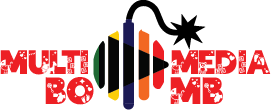Uncategorized
4 Graphic Design Rules That Should Always Be Followed
Balance and alignment
All elements placed on a page have their own visual weight. Weight can come in the form of size, color or texture. No one would put all the furniture in the corner of a room. In a similar way, designers should not crowd all heavy elements in only one area of their composition. When there is no balance, the audience will feel that their eye is playing tricks with them.
Symmetrical design can create balance by positioning equally weighted elements on both sides of a center line. Asymmetrical design makes use of opposing weights (for example, contrasting one huge element with many smaller elements) to create an uneven composition that still has equilibrium.
Symmetrical designs are pleasing to the eyes though they can be boring on some occasions. Asymmetrical designs tend to be bolder and are capable of bringing visual interest as well as movement to a composition.
Read more
| https://smithonline.smith.edu/mod/forum/discuss.php?d=15644 |
| https://smithonline.smith.edu/mod/forum/discuss.php?d=15650 |
| https://smithonline.smith.edu/mod/forum/discuss.php?d=15651 |
| https://smithonline.smith.edu/mod/forum/discuss.php?d=15652 |
| https://smithonline.smith.edu/mod/forum/discuss.php?d=15653 |
Contrast
When a design “pops” it means there is contrast. It seems to leave the page and stick to a viewer’s memory. Contrast in a web design creates the difference and space between elements. The background of a page should be different from the colors of the elements to let them work together in harmony and make it more legible.
When planning to work with type, it is very important to understand contrast since this just shows that the type has balanced size and weight. If all the things are in bold print, the audience will not be able to figure out what is most essential.
Most of the designs that are really strong and effective are those that only make use of one or two typefaces. This is since designers can effectively accomplish contrast by using two strong fonts or just a strong typeface that comes in difference weights. If more fonts are added, the purpose of the design will look confusing.
Repetition
If designers only use 2 strong typefaces or 3 dominant colors, they will have to repeat a number of things, which is alright. Repetition is often said to unify and strengthen a design. When only one part of the band poster comes in blue italic and sans-serif, it can be regarded as an error. On the other hand, when 3 things in the poster have blue italic sans-serif, a motif has been created and the design can be controlled.
Repetition is not only important in one printed product. Packaging design nowadays rely a lot on beautiful illustrated patterns. Therefore, those who plan to put up a startup business know that they need a strong logo that they show on their website, which is also seen in business cards and social media, among others. Brand identity also requires repetition.
Read more
Proportion
Proportion is the elements’ visual size and weight in a composition and the way they relate to one another. It is better to approach the design section by section rather than as a whole.
Grouping items that are related can stress their importance even if smaller in size. It can be a space at the bottom part of the poster to include ticket information or a sidebar on the site to be used as a search bar. When all the design elements are properly sized and thoughtfully placed, they can achieve proportion. When designers become proficient in contrast, balance alignment, proportion would come up organically.


